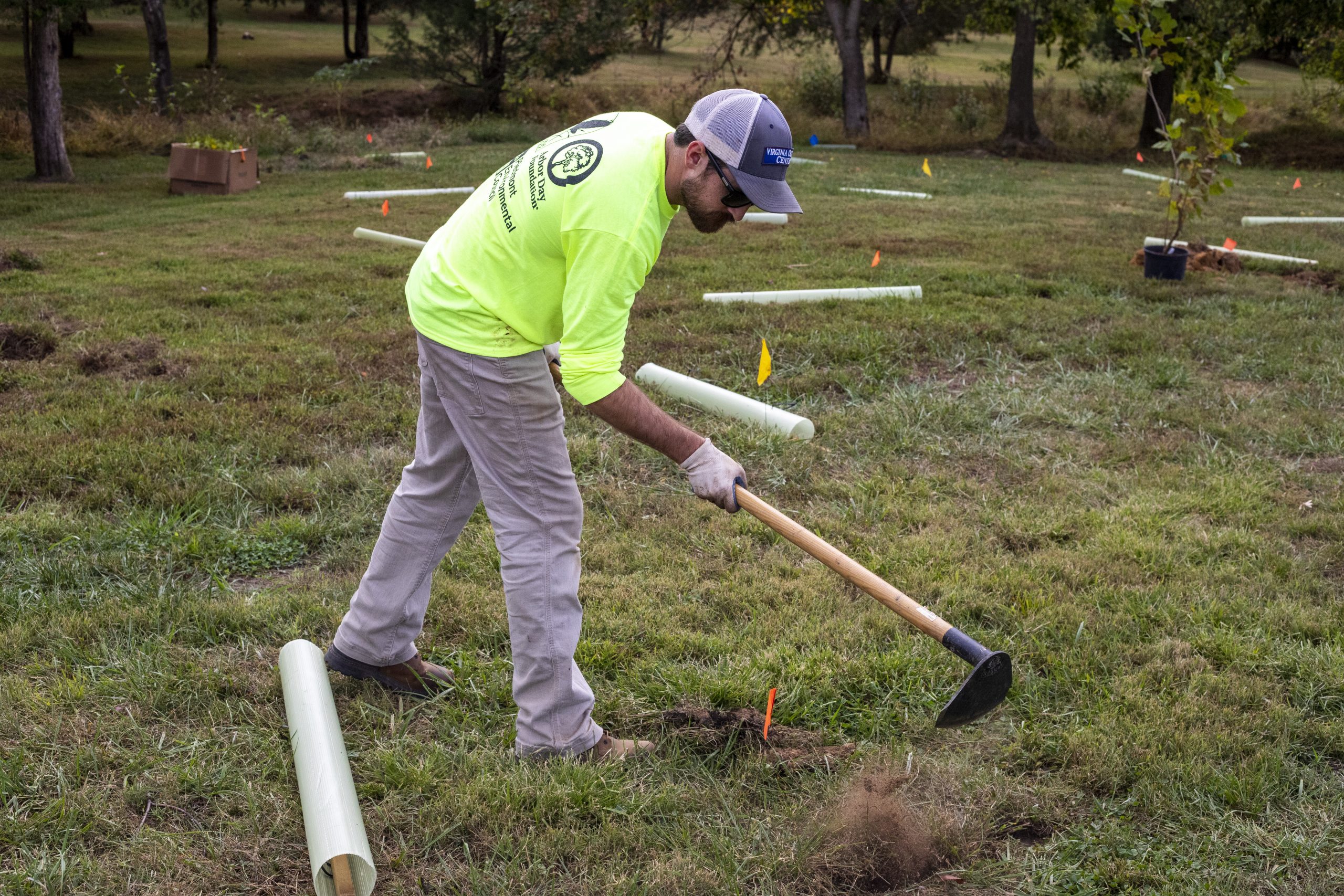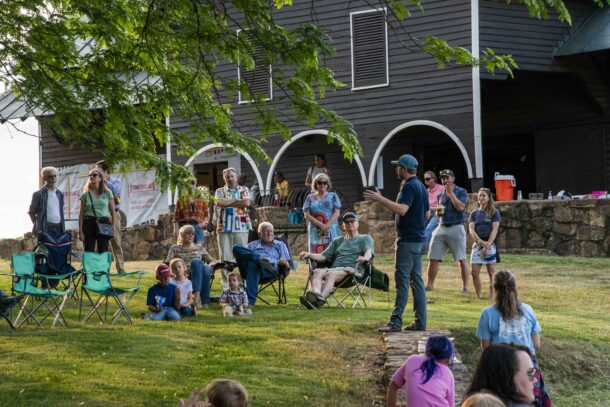
As I sit here in the office with the doors open I can feel the cool breeze finally blowing in. I can see the leaves changing and falling to the ground. In addition to picking pumpkins and trick or treating, this is also an excellent time to work in your yard. Here are a few river-friendly landscaping tips to help guide you on your way!
- Fall is for planting! The cooler nights and increase in soil moisture create great conditions for the roots of those newly planted trees, shrubs, and flowers to become established. The plants then have all winter to settle in and are ready to grow in spring! Most plant growth occurs in the spring and fall months.
- If you choose to fertilize your lawn – do it in the fall! According to Virginia Tech, “Fall is the OPTIMAL time to aggressively fertilize cool-season turfgrasses (bluegrasses, fescues, and ryegrasses). Cooling (but still warm) temperatures and shorter days are ideal conditions to maximize root growth and food storage in cool-season turfgrasses. The period from Sept. through Nov. is the time of year to deliver the annual Nitrogen (N) fertilization requirement, so don’t miss the chance to optimize your turf quality as well as its health. For warm-season grasses (bermudagrass, zoysiagrass, centipedegrass, and St. Augustinegrass), fall is a time to prepare the turf for winter dormancy. Refrain from additional Nitrogen applications and ensure your soil test indicates appropriate pH, Phosphorus (P), and Potassium (K) levels as you “put the turf to bed” for its winter nap.”
- Get a soil test! Whether you choose to fertilize your lawn or not it never hurts to know more about the health of the soil in your yard. Testing your soil is the first step to understanding what is happening in your yard’s landscape. Useful information includes the pH, major nutrient levels and organic matter percentage of your soil. A soil test report will also provide detailed instructions on how much to fertilize and when (if needed). You can use your local Virginia Cooperative Extension office for the materials and assistance with the test, or you can arrange to have a test done through a private lab through a local lawn and garden center.
- Use the leaves! They are the original mulch and organic matter! We can still have fun raking leaves while using them in our garden beds as mulch. This is a much more efficient and cheaper option than hauling leaves away and paying money to bring in ground up tree bark instead. For my lawn I use my lawn mower to mulch the leaves into small pieces which break down quickly into the soil. In the 10 years I have lived at my house I have seen the soil health greatly improve! Use can also compost leaves to create organic matter for use in any you choose!
- Leave the leaves and plants in your garden alone until late winter! The best way to put your garden to bed for the winter is to leave it alone! Many pollinators, insects, amphibians and other critters overwinter in the leaf layer. Birds and animals depend on plants for food sources through the winter and for hiding places from predators and harsh winter weather. I cut back my perennials and prune trees and shrubs in the late winter and leave the leaves.
- Landscape with plants that are native to the Chesapeake Bay region. They are the basis of our food chain and have evolved over millennia to the climate of our region. More can be found about native plants here. Or you can come into the office to get a free native plant guide and ask me all your questions!
Enjoy the fall weather and follow these tips for property that is healthy and helpful for the Rappahannock River. The river will thank you!
Written by River Steward Brent Hunsinger. If you have any follow up questions, please reach out at [email protected]


